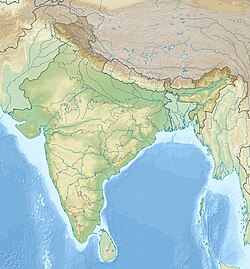Top Qs
Timeline
Chat
Perspective
Khadir Formation
Geological formation in India From Wikipedia, the free encyclopedia
Remove ads
The Khadir Formation is a geological formation in India. It is of Middle Jurassic age. Dinosaur bones are among the fossils recovered from the formation.
Remove ads
Lithology
The Khadir Formation is composed of in variegated to dark red argillaceous silt, where in ceratain horizions the silt are full of diagenetically formed gypsum. Occasionally, the silt is interrupted thin intercalations of fine to medium-grained crossbedded sandstone. The silt overlies whitish, medium-grained sandstone with large trough-crossbeds. Towards the north of Khadir Island a nine meter thick, friable, coarse-grained sandstone occurs, with large trough-crossbedding that cements towards the top and forms a small cliff. The depositional environment appears to have been a floodplain with fluvial channels bue to the variegated and red colours, fossil wood and the sharp erosional base of the sandstones.[1]
Remove ads
Paleobiota
Color key
|
Notes Uncertain or tentative taxa are in small text; |
Dinosaurs
Remove ads
References
Wikiwand - on
Seamless Wikipedia browsing. On steroids.
Remove ads
